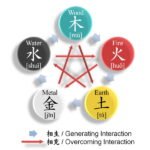
WASHINGTON/SEOUL — US President-elect Donald Trump’s transition team is seeking to eliminate federal incentives for electric vehicles, dealing a major blow to South Korean EV and battery makers that have invested 70 trillion won ($50.2 billion) in the world’s third-largest clean car market.
The transition team is planning to kill a $7,500 consumer tax credit for EV purchases as part of broader tax-reform legislation, Reuters reported on Thursday.
Tesla Inc., the leading US EV manufacturer, supported the end of the subsidy, the global news agency cited two sources as saying, as the measure, which is expected to further dampen the struggling industry, is likely to hit its rivals harder.
The transition committee is also seeking to abolish the advanced manufacturing production credit (AMPC), a tax benefit for battery producers and others, sources at the US Senate told The Korea Economic Daily.
“The AMPC is also subject to review for scrapping as Korean makers, not US companies, are major beneficiaries of the incentive,” said one of the sources.
BATTERY STOCKS LOSE GROUND
South Korea’s LG Energy Solution Ltd., SK On Co. and Samsung SDI Co. have received tax benefits, including a $35 tax credit per 1 kilowatt-hour produced by a battery cell and a $10 tax credit per 1 kWh battery module as they operate plants in North America.
The transition team’s plan dampened the share prices of South Korean battery producers. LG Energy, the world’s third-largest cell maker, tumbled 12.1% to end at 371,000 won, the lowest since Aug. 29.
Samsung SDI lost as much as 11% to 235,500 won, the weakest since April 2020, while SK Innovation Co., SK On’s parent, slipped 10.6% to 91,800, the lowest since Aug. 5.
“We need to find long-term survival measures while minimizing short-term damage,” said a strategy executive at one of the battery makers in Seoul.

PERPLEXED BATTERY MAKERS
South Korean EV and battery manufacturers had not expected such drastic changes although Trump was predicted to adjust the current US administration’s EV support policies.
They had hoped Trump may not pursue policies to slow down the economies of states that supported him and Republican candidates in the Nov. 5 election.
“Most battery plants are located in states, which support Republicans,” SK On CEO and President Lee Seok-Hee recently said.
Trump’s transition team defied such hopes, however.
Battery makers, which have already been under pressure from the global EV slowdown, are expected to suffer further if the US government stops providing the AMPC.
LG Energy received 1.1 trillion won of the incentive in the first three quarters of the year when the leading South Korean battery manufacturer reported an operating profit of 800.9 billion won.
SK On and Samsung SDI collected 211.1 billion won and 64.9 billion won, respectively, according to data from those companies.
“Some companies are likely to face difficulty in turning to the black if tax credits are reduced as their plant operating rates are falling due to weak EV demand,” said an industry source in Seoul.
The South Korean battery industry needs to expand other products such as cells for energy storage systems (ESS) for survival, those sources said.
FOR LEGACY AUTOMAKERS
Trump aims to support legacy automakers such as General Motors Co. and Ford Motor Co. by reducing their cost burdens for electrification, industry sources said.
The measures to end EV incentives are expected to allow internal combustion engine carmakers to boost profits by selling profitable models and collect money for electrification, they added.
Hyundai Motor Co. and its affiliate Kia Corp., the No. 2 EV player in the US after Tesla, are expected to see declines in their green car sales there.

The South Korean automakers are predicted to weather the slowdown with other models, industry sources in Seoul said.
“Hyundai and Kia have various technology of hybrids and extended range electric vehicles, which connect internal combustion engine cars and pre EVs,” said one of the sources.
Extended range electric vehicles (EREV) are automobiles in which propulsion power is provided almost entirely by an electric unit. They are additionally equipped with a small internal combustion engine to generate additional energy.
“With higher US tariffs on Chinese cars, Hyundai and Kia will be able to increase their overall market share if they improve their networks in North America based on cost competitiveness,” the source said.
Toyota Motor Corp. expanded its presence in the US by expanding production and sales networks there during the US-Japan trade conflict in the 1980s and 1990s.
By Sang-Eun Lee, Se-min Kim and Sang Hoon Sung
selee@hankyung.com
Jongwoo Cheoin edited this article.















